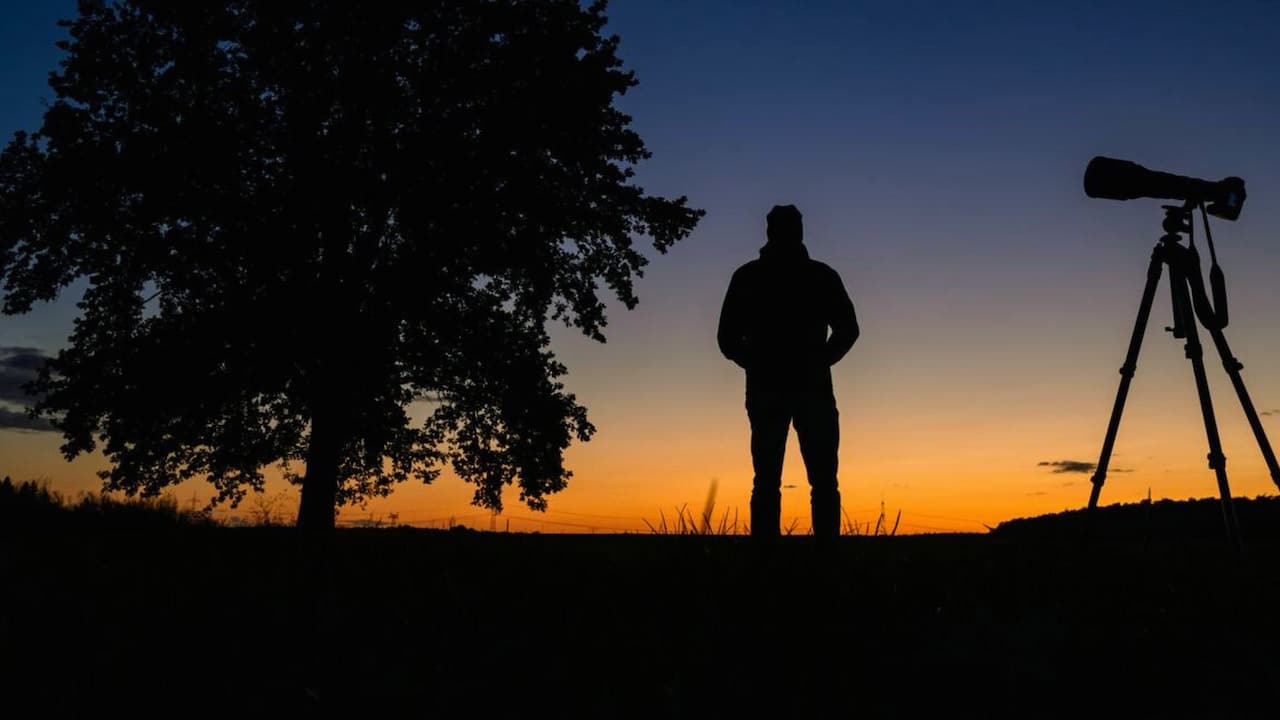Celestial Spectacle: Ancient Comet Dazzles Earthlings After 80,000-Year Hiatus
This weekend, sky-watchers are in for a rare treat. A cosmic visitor not seen since Neanderthals roamed the Earth is set to light up our night skies. Comet C/2023 A3 Tsuchinshan-ATLAS, dubbed by some as the “comet of the century,” will make its closest approach to our planet on Saturday.
As a news reporter on the scene, I can tell you the excitement is palpable among amateur stargazers and professional astronomers. This icy wanderer from the outer reaches of our solar system is giving us a once-in-a-lifetime show.
The comet will zip past Earth at about 44 million miles. While that may sound far, it’s close enough for sharp-eyed observers to spot it without fancy equipment. The best time to look? About an hour later, the Sun goes down, low on the western horizon.
Sally Brummel, who runs the planetarium at Minnesota’s Bell Museum, paints a vivid picture of what we might see. “It’ll be this fuzzy circle with a long tail stretching away from it,” she explains. Imagine a cosmic cotton ball with a glowing streamer – that’s our comet.
But why all the fuss over a dirty snowball in space? Well, this particular snowball has quite a story to tell. Scientists think the last time it swung by Earth, our ancient cousins the Neanderthals might have gazed up at it in wonder. That was a mind-boggling 80,000 years ago.
The comet’s discovery is a testament to modern astronomy. Two separate teams spotted it last year—one at China’s Purple Mountain Observatory and the other using an ATLAS telescope in South Africa. Hence, its tongue-twister name: Tsuchinshan-ATLAS.
For the past month, our friends in the Southern Hemisphere have been enjoying front-row seats to this cosmic spectacle. Now it’s the North’s turn. Dr. Robert Massey from the UK’s Royal Astronomical Society has tips for would-be comet hunters. If you’ve got a good camera – especially a DSLR – you might snag a photo of this celestial celebrity.
But here’s where things get interesting. This comet isn’t just making a pit stop. It’s on a wild ride through our cosmic neighborhood. The number crunchers at the Paris Observatory’s Institute of Celestial Mechanics have been hard plotting its path.
Their models suggest this could be the comet’s farewell tour. It might get “ejected from the solar system and lost among the stars.”
Let’s break that down. Imagine throwing a ball so hard that it escapes Earth’s gravity and floats into space. That’s basically what could happen to our comet friend but on a much grander scale.
The Sun’s gravity might not be strong enough to keep it in orbit, sending it off on a one-way trip into the vastness of our galaxy.
So, what does this mean for us Earthlings? Well, it’s a reminder of how dynamic and ever-changing our cosmic neighborhood is. Comets like C/2023 A3 are time capsules from the early days of our solar system. They’re made of the same stuff that eventually clumped together to form planets like Earth. By studying them, we learn about our origins.
But beyond the science, there’s something profoundly moving about watching a comet. It connects us to our ancestors, who looked up at the same sky with a mix of fear and wonder. It reminds us of our place in the vastness of space and time.
So, this Saturday, why not step outside and look up? You might just catch a glimpse of a cosmic traveler who’s been on an 80,000-year journey to pay us a visit. No special equipment is needed—just your eyes and a bit of patience.
Here are a few viewing tips:
- Find a dark spot away from city lights.
- Give your eyes time to adjust to the darkness.
- Look to the western horizon about an hour after sunset.
- Binoculars or a small telescope can help but aren’t necessary.
Remember, comets can be unpredictable. Sometimes, they put on a dazzling show; others fizzle out. But that’s part of the excitement. Whether C/2023 A3 Tsuchinshan-ATLAS lives up to its “comet of the century” hype or not, it’s a rare chance to witness a piece of cosmic history.
So gather your friends, pack a thermos of hot cocoa, and prepare for a night of stargazing. Who knows? You might see something that will stick with you for the next 80,000 years.
